Freeride mountain biking is thrilling. It pushes riders to exceed their limits across various landscapes. Mastering certain techniques is crucial for a good ride. These skills include adjusting how you sit or stand on the bike and improving how you control it. They also involve learning specific ways to ride that boost both your performance and safety. With proper advice, bikers can get better at tackling different grounds. They can also face downhill challenges head-on and pick the right gear for their trips.
Understanding Freeride Mountain Biking
Freeride mountain biking brings together downhill, cross-country, and trials biking. It’s thrilling, allowing riders to tackle different terrains. The focus is on grace and excitement, pushing the boundaries of what riders and their bikes can do.
In the 1970s, the sport began with pioneers modifying their bikes for tougher landscapes. Technology advances have shaped freeride biking since then. By the 1990s, bikes were designed for better performance, enabling riders to manage extreme features confidently. Nowadays, freeride bikes have about 180 to 190 mm of suspension travel, a bit less than downhill bikes.
This biking style is not just about speed but also includes tricks and jumps. Competitions like Red Bull Rampage and Crankworx showcase the sport’s thrill. Places like British Columbia’s North Shore are famous for challenging riders with man-made obstacles.
The community plays a big role in spreading knowledge about freeride biking, which helps in skill development and safety. Riders share tips on body positioning and bike setup for different terrains. This ensures control and safety on challenging rides. For more about freeride biking, read this detailed guide on freeride mountain biking.
The Importance of Bike Setup
Effective freeride mountain biking needs close attention to bike setup. The right gear is crucial for better performance and keeping riders safe. It’s key to choose bike equipment that suits your body size, weight, and the terrain you ride on. This ensures you get the most out of your trail experiences.
Choosing the Right Equipment
Choosing your mountain bike involves looking at size and the parts it’s made of. A well-fitted bike gives you better control and lowers injury chances. You should think about:
- Correct saddle height: It’s vital for good pedalling.
- Handlebar alignment: Right alignment means better control and comfort.
- Component quality: Better components mean better performance and less upkeep.
Wearing protective gear, like full-face helmets, knee pads, and gloves, adds safety. Helmets are a must to avoid head injuries. Strong protective gear reduces the danger on tough trails.
Adjusting Suspension for Optimal Performance
For top performance, getting your bike’s suspension right is key. The right adjustment depends on your weight and the kind of ground you ride on. It greatly influences grip and handling. Know how to adjust preload, compression, and rebound to make your bike handle well, no matter the surface.
This know-how lets you adjust your bike for any scenario, from rocky paths to smooth slopes. A correctly set suspension absorbs bumps better. This makes for a smoother ride and more comfort. If you want to get even better at mountain biking, consider learning from expert tips.
Freeride Mountain Biking Techniques
To get better at freeride mountain biking, you need to know certain skills. These improve how stable the bike feels and make the rider more confident on tough trails. We will look at how to position your body, how to brake properly, and why choosing the right gear and way to pedal matters.
Body Positioning for Stability
How you position your body is key for keeping the bike stable. Stand centred with bent knees and wide elbows for better control on rough grounds. You should lean back a bit to help with balance and control. This way, you can quickly deal with any obstacles. Look ahead to see what’s coming and stay stable.
Mastering One-Finger Braking
Using just one finger to brake is important for staying in control. Use your index finger to gently press the brakes. This helps you control the braking power and avoid skidding. It’s especially useful on downhill paths. Getting good at this makes braking more effective, helping you through the tricky parts of trails.
Using the Right Gear and Pedal Techniques
Choosing the right gear is crucial for pedalling effectively. Don’t just switch to the lowest gear when going uphill. Keep a steady pace to maintain momentum. Good pedalling means keeping your pedals flat and shifting your weight correctly. This helps with going up and down hills smoothly.
Skills for Navigating Terrain
Mastering several skills is key for riders tackling tough terrains. It’s all about adapting your grip to stay in control. This keeps you safe on various surfaces. Riders also need to know the ground well to shift their weight the right way. This helps them stay stable.
How to Maintain Grip on Different Surfaces
Grip methods matter a lot on different grounds. Riders must change how they spread their weight depending on the surface. For loose ground like gravel, lean back. On solid ground, lean forward. The right foot pressure and picking the best path also matter. They help you stay stable whether you’re going up or down. Practise often to gain more confidence and control.
Cornering Techniques in Freeride
In freeride mountain biking, how you corner is crucial. It affects your speed and how smooth you ride on trails. To corner effectively, lean into it and keep the outside pedal low for grip. Always look ahead to where you want to go. This makes your moves more precise. Training on various terrains improves your cornering. It gets you ready for any turn, letting you go fast but safe.
Practising Advanced Maneuvers
For freeride mountain bikers, mastering advanced maneuvers is key. Techniques like jumping and drops show off a rider’s skill and better their bike control. These skills also ensure safe landings after jumps, important in freeride biking.
Jumping and Drops: Techniques for Safe Landings
It’s vital for riders to keep up their speed and balance when hitting jumps for good lift. Control is crucial once in the air. Bending knees during landings helps absorb the impact. This is crucial for both jumps and drops, which require understanding their differences for efficient freeride path navigation.
How to Execute a Bunny Hop Effectively
The bunny hop is a basic but essential skill. It lets riders jump over obstacles without getting off the bike. This move needs perfect body weight shifts and timing, lifting both wheels by pulling on the handlebars and pushing down on the pedals. Mastering this improves trail navigation and overall performance.
The Role of Physical Conditioning
Physical conditioning boosts biking fitness and overall performance in freeride mountain biking. Strength training helps build key muscle groups. These are needed for endurance and stability on different terrains. Exercises like squats, lunges, and deadlifts strengthen core muscles. This helps maintain posture and control on the bike.
Strength Training for Mountain Bikers
Effective strength training programmes work on many muscle groups. This boosts riding performance. A strong aerobic base helps with long activities, while anaerobic energy is good for short, intense efforts. Adding biking workouts to training brings benefits like more power and better sprinting.
Cross-Training for Improved Performance
Cross-training activities like swimming, running, or road cycling improve heart health and lower injury risk. This variety engages different muscles and sharpens reflexes, making a big difference in biking performance. Training plans have three phases: base, build, and specialty. Each phase targets specific fitness needs for better mountain biking skills.
A well-rounded physical training includes cross-training activities and strength training. This greatly improves a biker’s trail performance. For more on mountain biking techniques, see the guide at riding tips and techniques.
Conclusion
Freeride mountain biking combines excitement, skill, and fitness. This overview shows the need for the right bike setup. Adjusting your suspension and choosing the correct wheels are key. Riders pick bikes like the Santa Cruz Nomad or Canyon Torque for their style. These bikes have top-notch hydraulic disc brakes for safe stopping on sharp declines.
Standing correctly is vital for stability across different terrains. Using one-finger braking helps with smoother control. The ability to adapt to surfaces is crucial, as is looking ahead. This lets riders confidently handle complex moves.
To get better at freeride mountain biking, practice and fitness are essential. Strength and cross-training boost your performance. This allows riders to take on the thrilling challenges of off-road biking. With dedication to improving these skills, riders will enjoy safer and more thrilling rides.
FAQ
What is freeride mountain biking?
Freeride mountain biking blends downhill, cross-country, and trials. It encourages riders to creatively use speed and tricks on varied terrains.
What essential techniques should I learn for freeride mountain biking?
Learn to handle your bike well and position your body correctly. Also, get good at one-finger braking and using gears to boost performance and safety.
How important is bike setup for effective freeride biking?
Bike setup is key. It’s vital to choose the right bike and gear for your size and the trails. Make sure to have the right suspension and wear safety gear like full-face helmets and pads.
How do I adjust my bike’s suspension?
Adjusting your suspension means setting preload, compression, and rebound right for your weight and the terrain. It makes your ride smoother by improving grip and control.
What is the best body position for stability while riding?
Keep a centred position with knees bent, elbows open, and weight slightly back. This stance makes handling easier, helps with obstacles, and keeps the bike stable.
How do I effectively use gears when mountain biking?
Choosing the right gear is crucial. Don’t rush to the lowest gear on climbs. Aim for steady pedalling. Balance your weight well for smooth climbs and descents.
What techniques should I use to maintain grip on different terrain?
Change your weight distribution based on the surface. Lean back on loose surfaces and forward on hard ones. This will help keep you stable and in control.
What are cornering techniques I should practice?
When turning, lean in, keep the outside pedal down, and look ahead to the corner’s exit. Practicing on varied terrains improves speed and smoothness.
How can I safely jump and execute drops?
Hit jumps at a good speed and keep your weight centred for lift off. Use your legs to absorb the landing. Knowing the difference between jumps and drops is crucial for safety.
What is the bunny hop, and how can I master it?
The bunny hop lets you lift both wheels off the ground. Perfect it by pulling up the handlebars, pushing down on the pedals, and timing your weight shifts.
Why is physical conditioning important for mountain bikers?
Good fitness levels improve performance and stability. Strength training targets key muscles, while cross-training boosts heart health and lowers injury risks, enhancing biking skills and stamina.
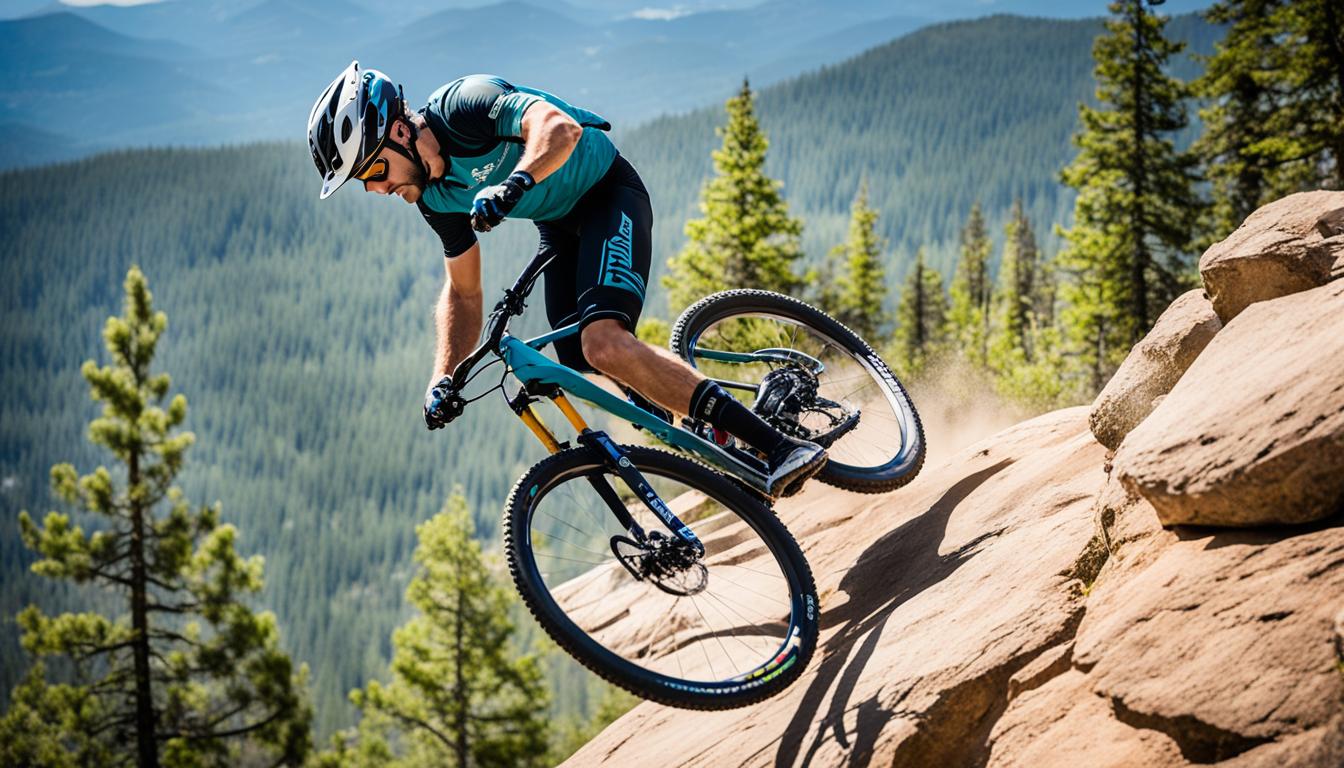
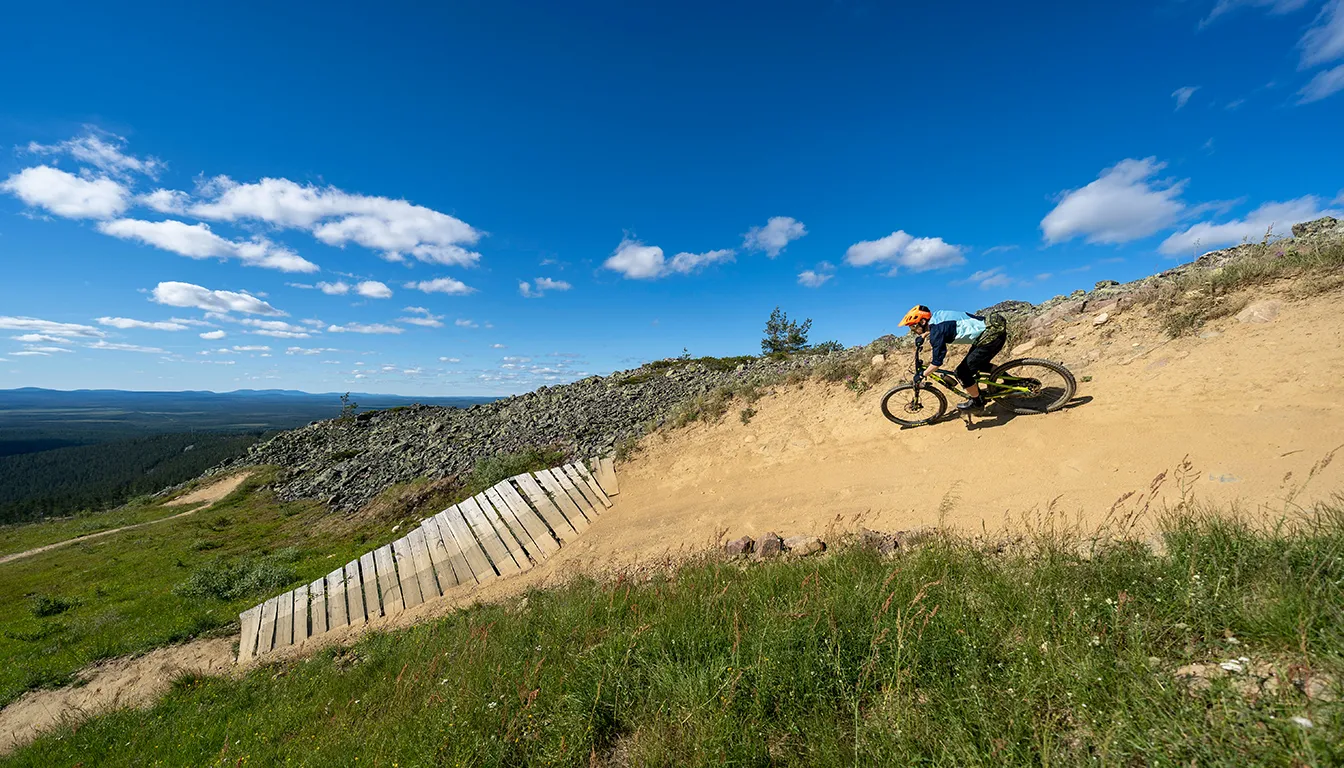

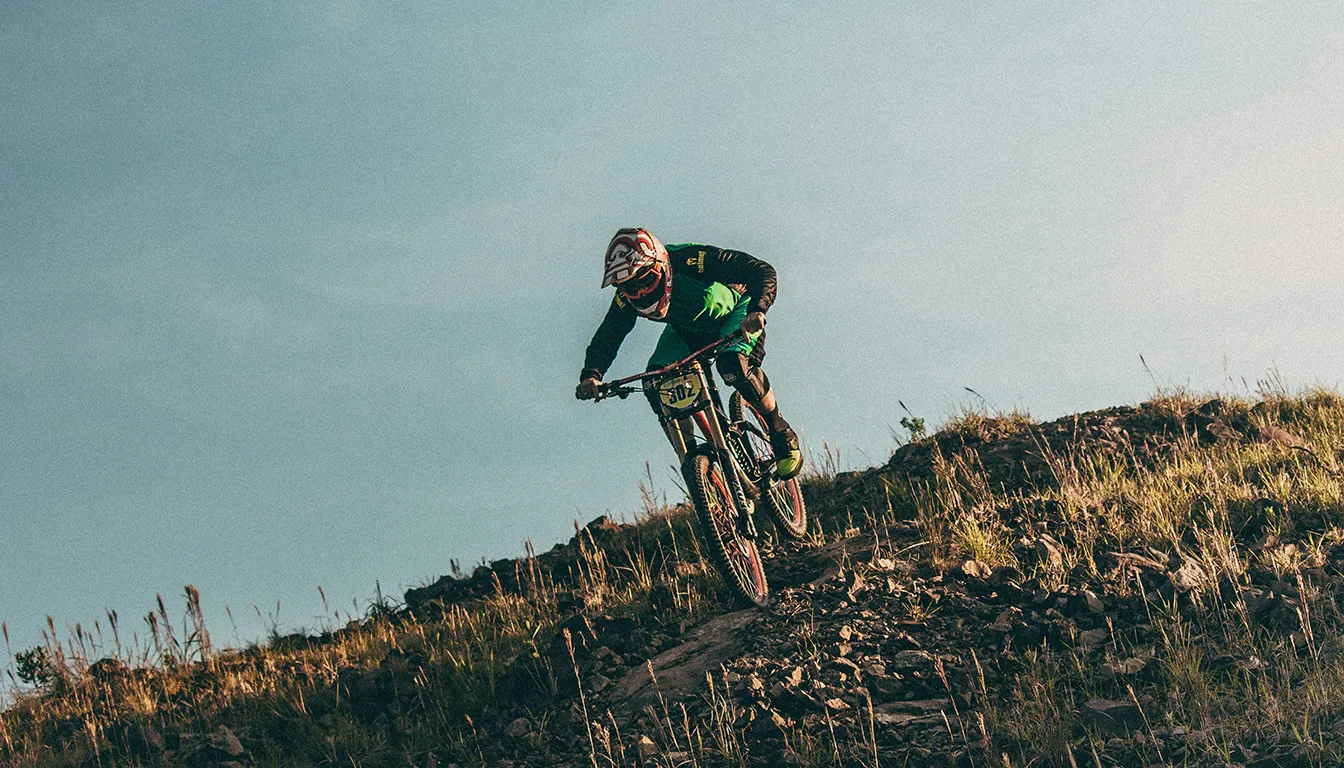
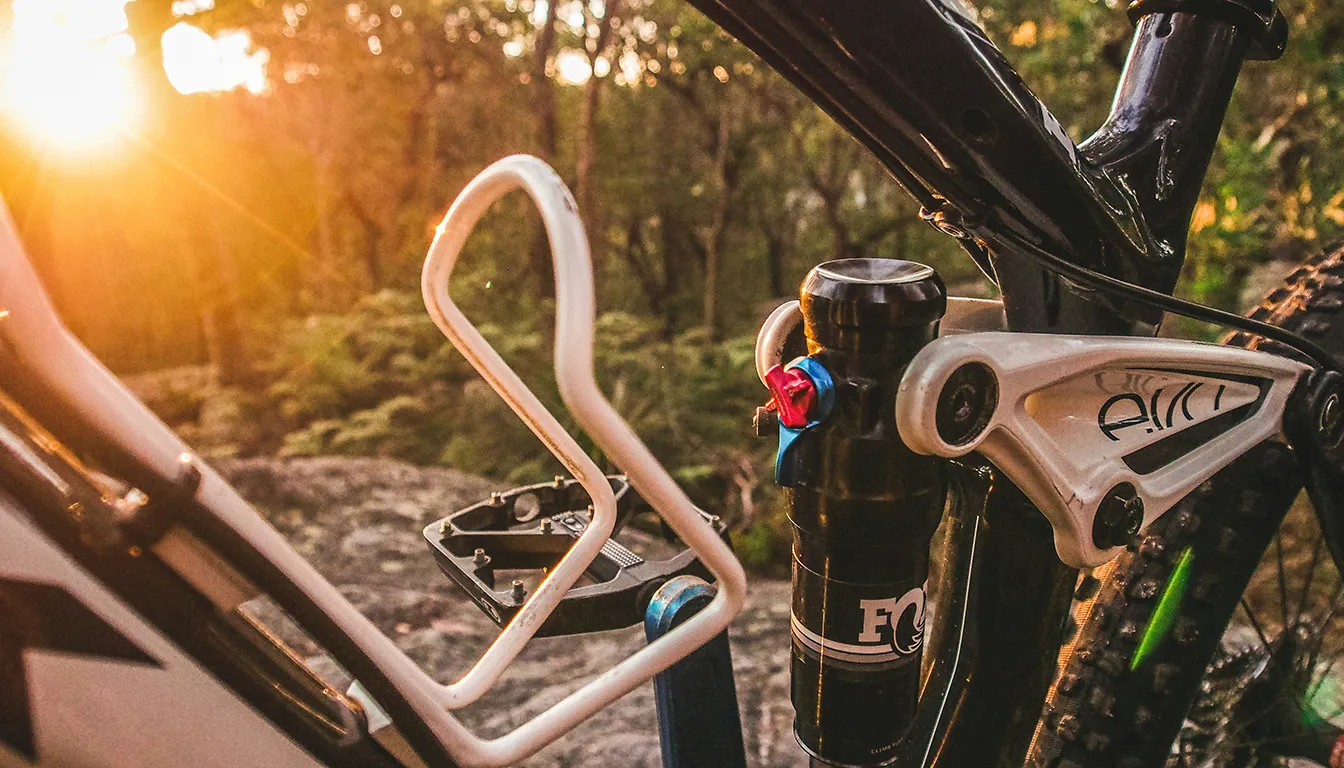
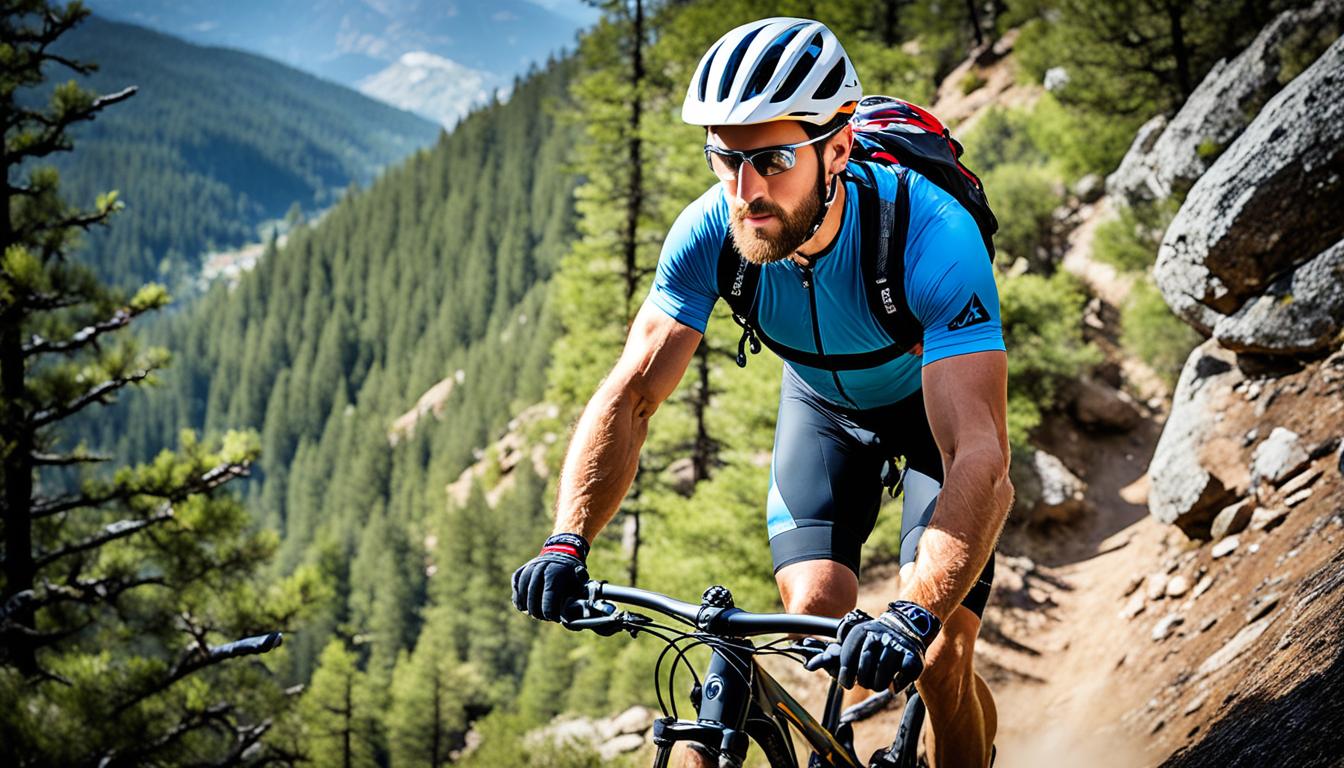
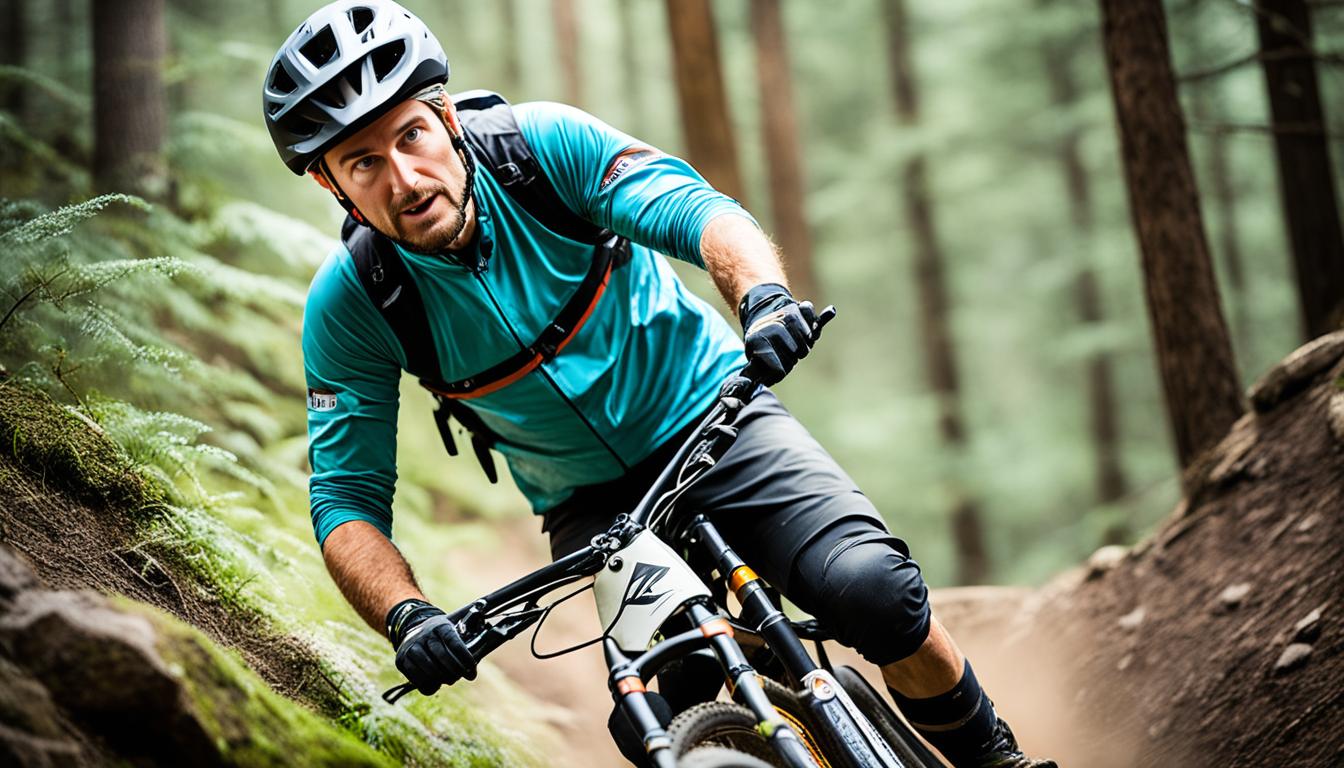
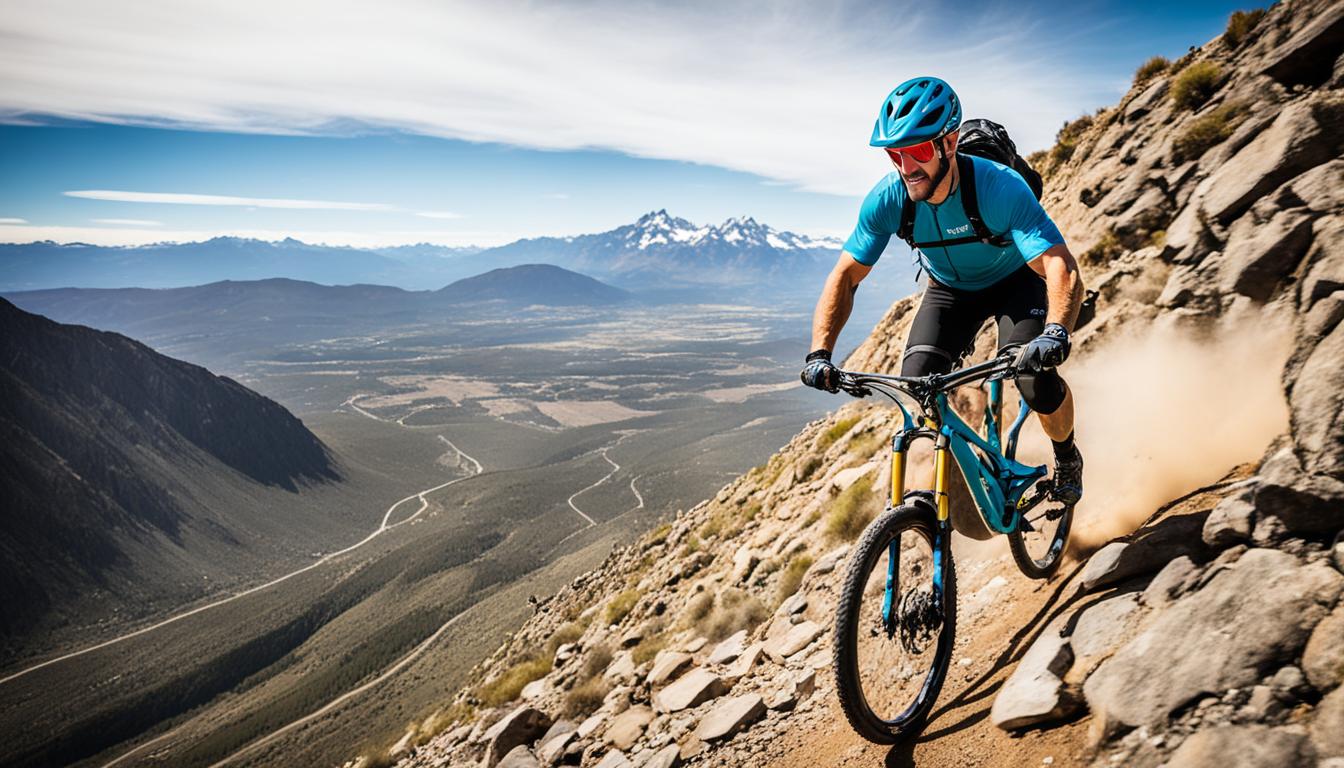
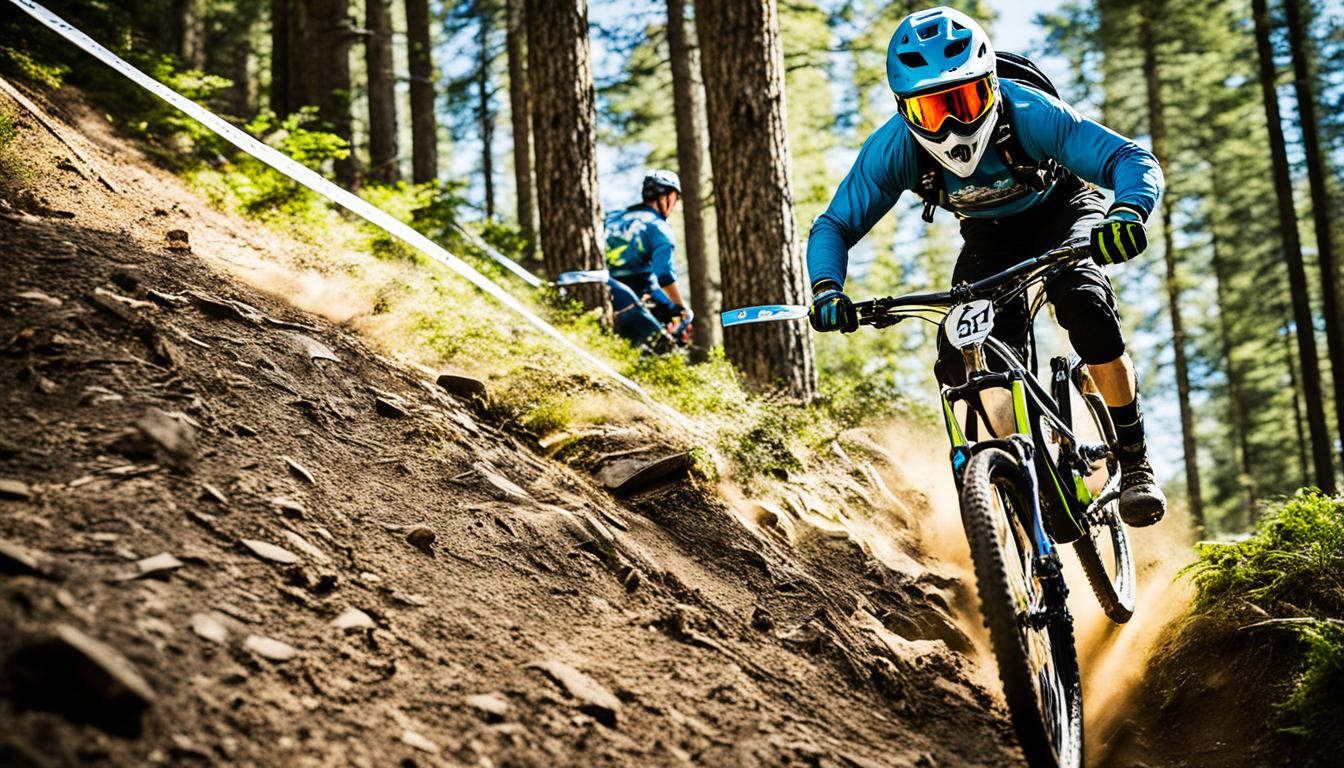
One thought on “What Are the Essential Techniques for Freeride Mountain Biking?”